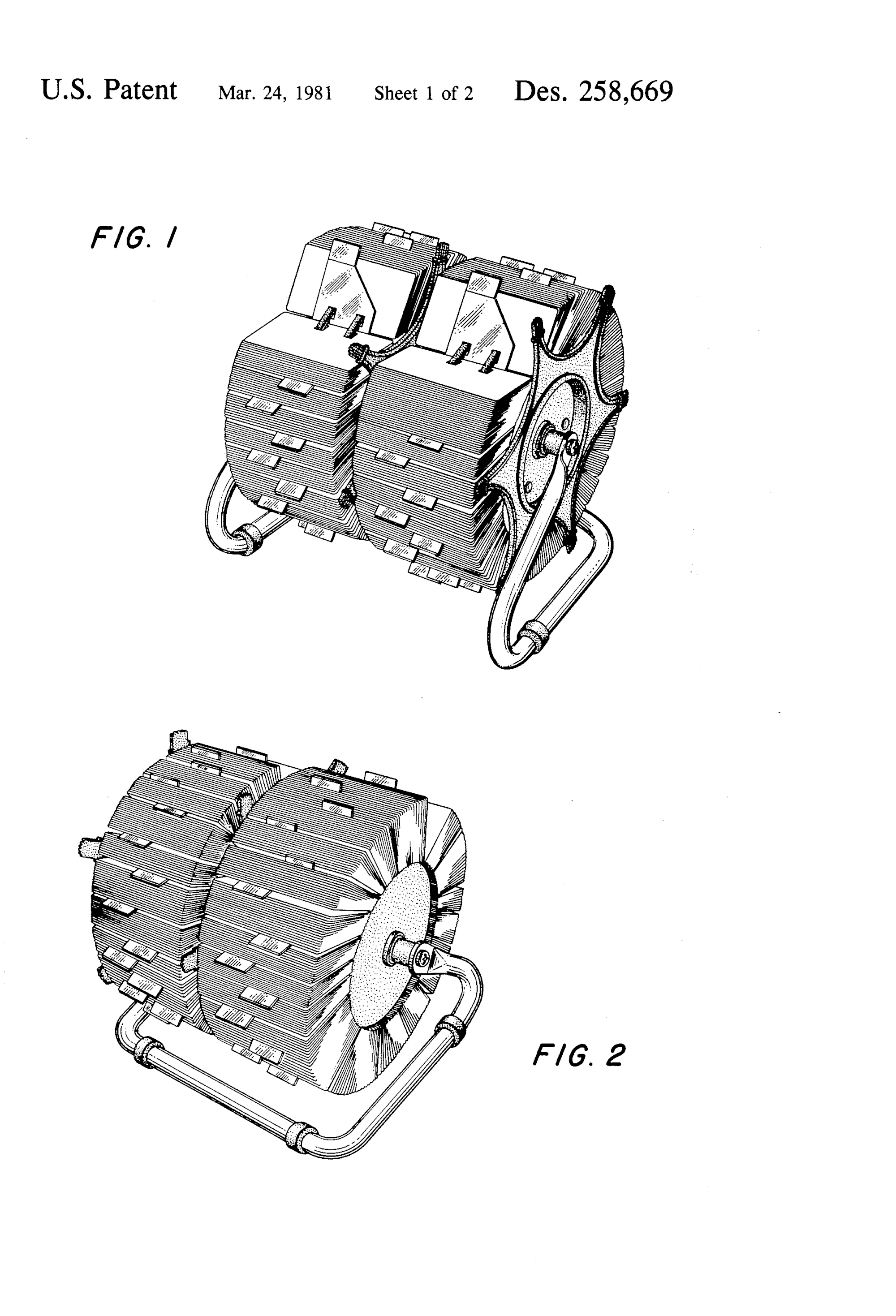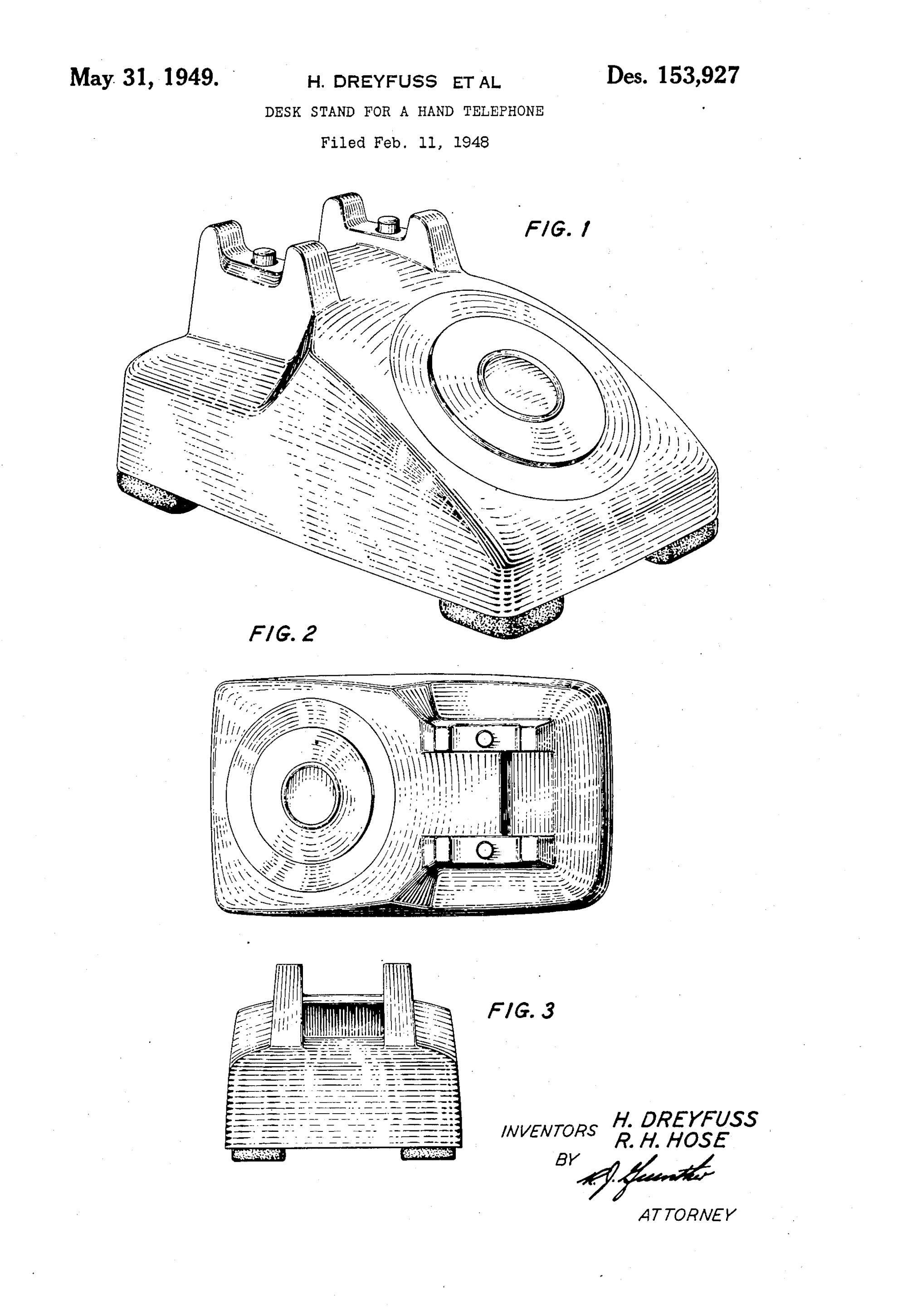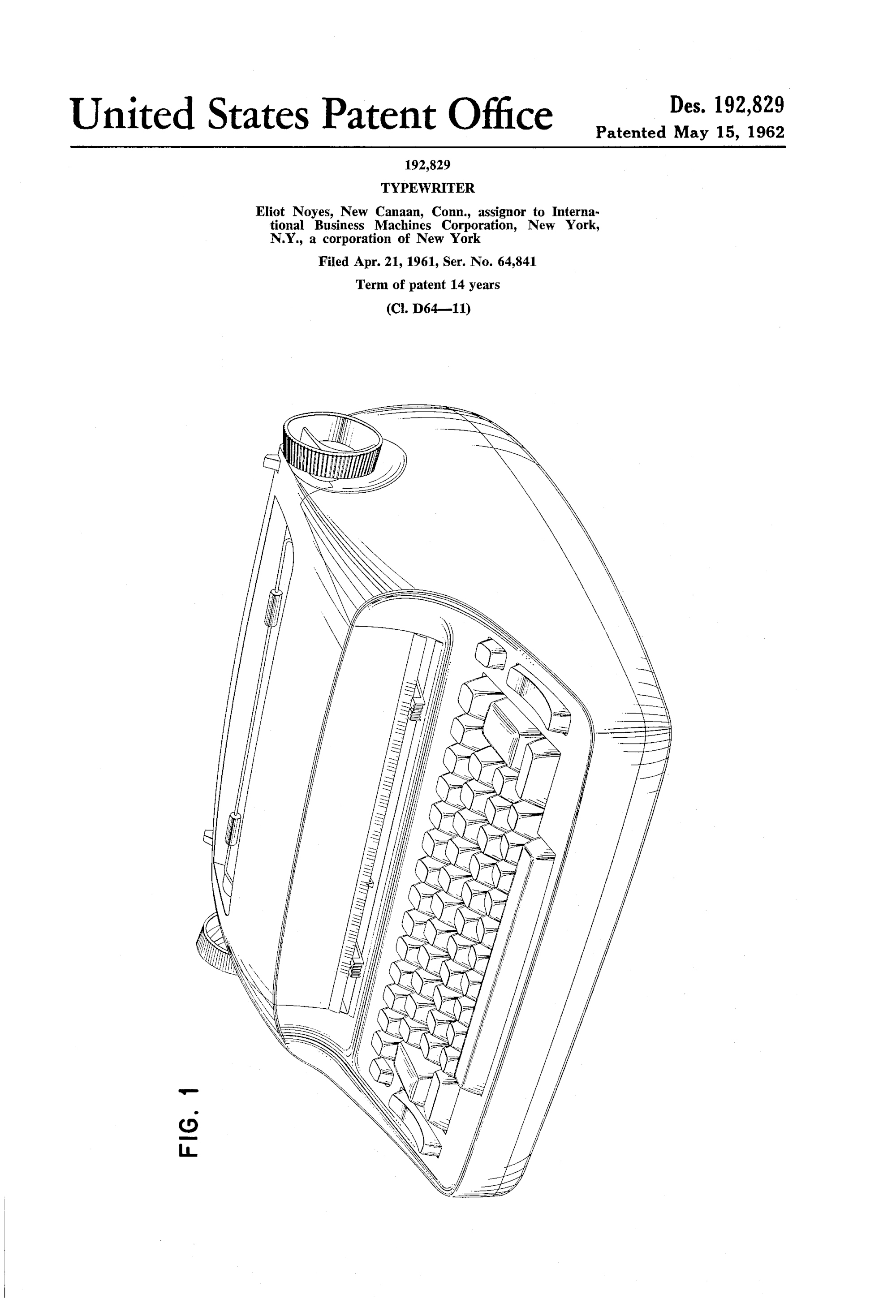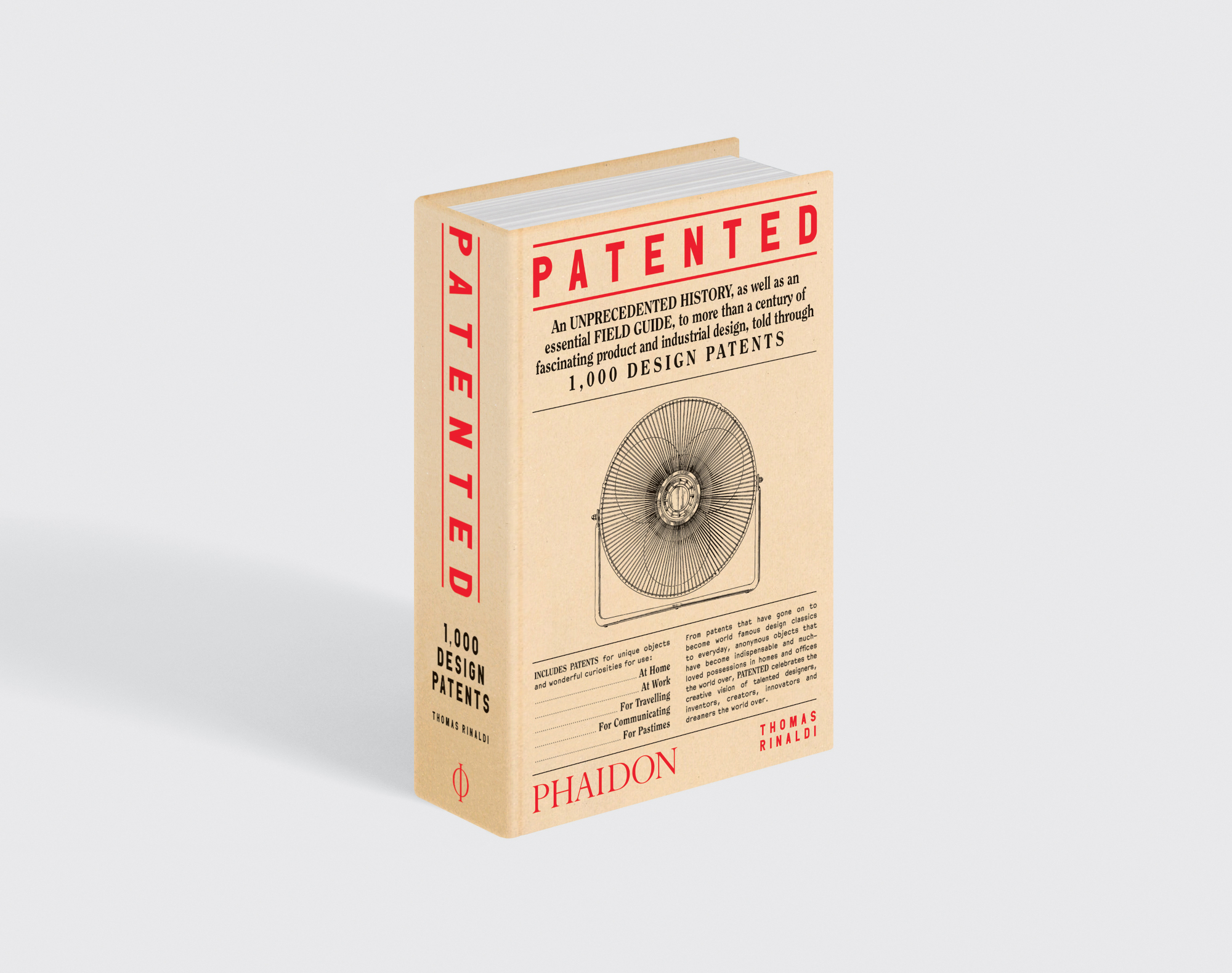
Patented Professionalism
Our new patent design book holds some amazing reminders of what the office environment (remember that?) once looked like
When the author Thomas Rinaldi came to edit down the many thousands of possible inclusions to the design patents featured in his new book Patented: 1,000 Design Patents he had strict editorial criteria in mind. For one thing, many of the chosen consumer goods outlined in these distinctive documents had to be, in one way or another, familiar.
“The selection features many designs that are universally owned, used, and loved in homes, offices, and towns across the world,” he writes in the book’s introduction. These inclusions had to range "from the tiny to the gigantic, providing a synthesis of product design through the objects the majority of us use every day at home, at work, out and about in towns and cities, and while traveling at home and abroad.”
Plenty of us will have encountered Patented’s goodies in our homes, or on the streets of our neighbourhoods and city centres. The book features many familiar toys, traffic lights, jukeboxes, cars, and kitchen gadgets, for example.
However, a great many more will have found a space in our working environment at one time or another, even if they’re more of design memory or anachronism, as opposed to a genuine, contemporary office must-have. You see, Patented’s documents date from the present day back to 1900, so not every invention will be a current must-have for today’s upwardly mobile professional.

Take, for example, Henry Dreyfuss’s desk telephone, created for Bell Telephone Laboratories in the late 1940s. This landmark of product design was once a familiar sight in the white-collar working environment, yet its inclusion today would surely be as a design affectation, rather than a vital piece of communications tech.

Harvard-educated architect and industrial designer Eliot Noyes doesn’t enjoy quite the same reputation as Dreyfuss, though he did work with such boldface names as Marcel Breuer, Charles Eames and Paul Rand throughout his long and illustrious career. His 1961 IBM Selectric typewriter was especially innovative for its time period. Rather than employ a set of keys to bash the characters onto paper, the Selectric was the first to use a golfball-shaped element covered in font.

Generally it's only the aesthetes and technophobes among us who use paper address books these days, when so much is stored, accessed and shared digitally. Yet you can’t help but admire the nifty knobs of the old Rolodex, created by the Danish engineer Hildaur Neilson, that allowed execs and wannabe execs alike to flick through their carefully alphabetised contacts in seconds.
Indeed, Rinaldi makes us wait until the closing decades of the 20th century before Patented serves us up with something we might, conceivably find in today’s office. The German-born designer Harmut Esslinger was not the first person to conceive of the computer mouse. However, Esslinger was instrumental in tech development; while working with Apple, he pioneered the off-white tones once common to personal computing.

This particular design was actually for NeXT, the tech firm Steve Jobs founded in the mid-eighties after being forced out of Apple. You’re unlikely to see any of their work stations in your working environment, as the company was wound up in 1997. However, the tail and pads on this mouse is quite like ones nestling beside plenty of keyboards today.

To track its rise within the workplace alongside 999 other fascinating goods both familiar and less so, order a copy of Patented: 1,000 Design Patents here. It's an essential field guide to more than a century of fascinating product and industrial design. Look out for our interview with its equally fascinating author, Thomas Rinaldi, next week.